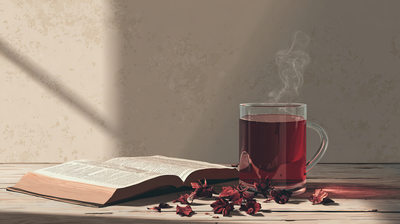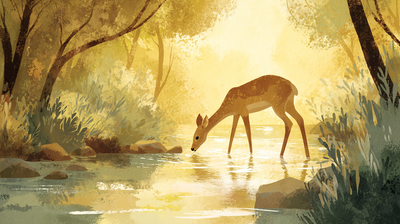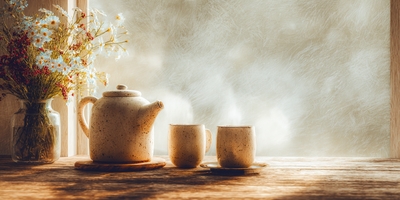How To Brew Loose Leaf Tea: The Ultimate Guide With Tips & Tricks
Inside this Article:
- 1. Picking Your Perfect Loose Leaf Tea
- 2. Essential Teaware for Brewing Loose Leaf Tea
- 3. Determining the Ideal Tea-to-Water Ratio
- 4. Heating Water for Loose Leaf Tea
- 5. Warming the Teapot and Infuser
- 6. Brewing Loose Leaf Tea
- 7. Serving and Savoring Your Brewed Loose Leaf Tea
- 8. Re-steeping Your Loose Leaf Tea
- 9. Storing Loose Leaf Tea Properly
- 10. Discovering and Experimenting with Loose Leaf Tea
- Conclusion
Master the Art of Brewing: Your Ultimate Guide to Loose Leaf Tea
Embracing the world of loose leaf tea is an exciting journey into a realm of rich flavors, enticing aromas, and cultural traditions. To help you navigate this fascinating landscape and learn how to brew loose tea to perfection, we've compiled a comprehensive guide full of tips & tricks to elevate your tea experience.
1. Picking Your Perfect Loose Leaf Tea
When choosing a loose leaf tea, explore the diverse range of options available, including green, black, white, oolong, and pu-erh teas. Remember that the quality of your tea leaves has a significant impact on the taste of your brewed tea, so make sure to invest in high-quality teas. Check out our collection of high-quality teas!
2. Essential Teaware for Brewing Loose Leaf Tea
To brew loose leaf tea correctly, you'll need the following teaware:
A. Teapot or teacup with infuser / biodegradable filter : Opt for a teapot or teacup featuring a built-in infuser, which allows the tea leaves to expand and release their full flavor, or use one of our biodegradable tea filters! Glass, ceramic, or porcelain teapots are ideal, as they do not retain flavors or aromas from previous brews.
B. Tea kettle: A high-quality tea kettle ensures consistent water temperature, essential for optimal tea brewing. An electric kettle with temperature control is highly recommended for maximum precision.
C. Measuring spoon : Accurately measure the right amount of tea leaves with a measuring spoon.
3. Determining the Ideal Tea-to-Water Ratio
The perfect tea-to-water ratio varies based on the type of tea and individual taste preferences. Generally, use 1 teaspoon of loose leaf tea for every 8 ounces of water. You can adjust this ratio for a stronger or milder brew.
4. Heating Water for Loose Leaf Tea
Different types of tea require specific water temperatures for optimal brewing. Use this guideline:
-
Green tea: 165-185°F (70-82°C)
-
White tea: 175-185°F (80-85°C)
-
Oolong tea: 180-200°F (82-93°C)
-
Black tea: 200-212°F (93-100°C)
-
Pu-erh tea: 200-212°F (93-100°C)
A temperature-controlled kettle ensures that the water is heated to the exact temperature needed for your chosen tea.
5. Warming the Teapot and Infuser
Before adding tea leaves and water, warm your teapot/mug and infuser by pouring hot water into the teapot/mug, swirling it around, and then discarding the water. This step helps maintain the water temperature during the brewing process, enhancing the flavors and aroma of your tea.
6. Brewing Loose Leaf Tea
Place the measured tea leaves into the infuser/filter and pour the heated water over them. Allow the tea to steep for the recommended time, depending on the type of tea:
-
Green tea: 2-3 minutes
-
White tea: 2-5 minutes
-
Oolong tea: 3-5 minutes
-
Black tea: 3-5 minutes
-
Pu-erh tea: 3-5 minutes
Adjust the steeping time according to your preference, but be aware that over-steeping can result in a bitter taste, while under-steeping may yield a weak flavor.
7. Serving and Savoring Your Brewed Loose Leaf Tea
After steeping, remove the infuser/filter or pour the tea through a strainer into your teacup. Take a moment to appreciate the aroma and appearance of the tea before tasting. To fully enjoy the nuances of your tea, initially avoid adding sugar, milk, or other additives. After familiarizing yourself with the tea's natural flavors, feel free to experiment with sweeteners or creamers if desired.
8. Re-steeping Your Loose Leaf Tea
Quality loose leaf tea can often be re-steeped multiple times, providing a chance to enjoy its evolving flavors with each infusion. To re-steep, simply add more hot water to the same tea leaves and extend the steeping time by 30 seconds to 1 minute. Keep in mind that delicate teas like green and white tea may lose their flavor more quickly than robust options like black, oolong, or pu-erh.
9. Storing Loose Leaf Tea Properly
To preserve the freshness and quality of your tea, store it in an airtight container, away from direct sunlight, heat, and moisture. Avoid placing your tea near strong-smelling items, as it can absorb odors and compromise the taste. When stored correctly, most loose leaf teas can last for 1-2 years or more.
10. Discovering and Experimenting with Loose Leaf Tea
The world of loose leaf tea offers an incredible variety of flavors and experiences. As you become more proficient in brewing and enjoying tea, don't hesitate to experiment with different varieties, create your own blends, or delve into traditional tea ceremonies from around the globe. The journey is as much a part of the enjoyment as the destination.
Conclusion
Mastering the art of brewing loose leaf tea opens up a world of delightful flavors, sensory pleasures, and rich cultural history. With this comprehensive guide on techniques, tips, and tools, you'll be well-equipped to brew the perfect cup of tea and immerse yourself in the enchanting world of this ancient beverage. Happy brewing!






